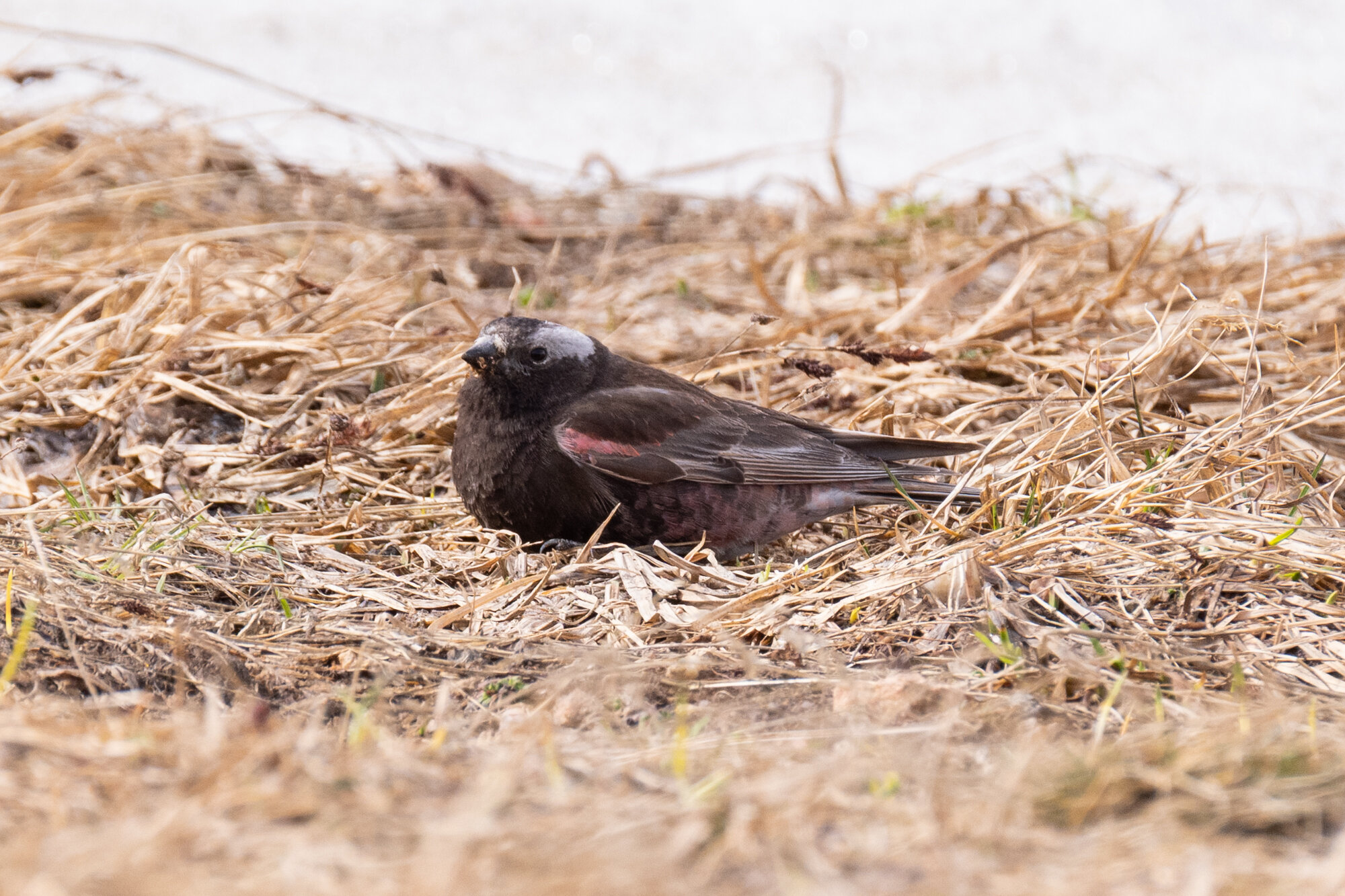2021 Michigan Trip - Yellowstone
Our second main stopping point of the trip was Yellowstone. Although we didn’t spend much time birding it, we did pass through the park and take lots of photos of the native non-avian wildlife. The park was very crowded, but we were able to get some lovely landscape and mammal pictures. However, the birds were a bit lacking.
One of the first mammals we encountered was a friendly herd of Elk (Cervus canadensis) grazing inside a field enclosed in a Yellowstone “town”/visitor center. They were seemingly unaware of us and didn’t mind the human attention, though everyone stayed a reasonable distance away from them.
Of course, it’s spring, so a herd of mammals wouldn’t be complete without a few babies, like this one. This baby elk typically stayed close to its mother but did socialize with a few other young elk.
Yellowstone is famous for its large herds of American Bison (Bison bison), and it did not disappoint. There were massive flocks of them crossing rivers, roads, and plains. Of course, with them came the ever-present warnings about staying a reasonable distance away in order to preserve your life, and for the most part, people followed the rules.
But what bison herd could be complete without a few babies in it. This young bison spent its time frolicking around in the grass, running back and forth, playing with one of its friends, and occasionally stumbling down green embankments.
Exiting Yellowstone and heading into the mountains, we found colonies of Yellow-bellied Marmots (Marmota flaviventris) living in the rocks. These marmots were hardy little things, braving the wind and the practically year-round snow to live in this frozen climate. However, they seemed to lack car sense, and we saw one individual who had been horizontally flattened against the road.
Being a rodent, the marmot bears a slight resemblance to the Capybara (Hydrochoerus hydrochaeris). Oddly enough, they do not share the same family.
One of the more surprising finds from the Yellowstone area was this pair of Trumpeter Swans (Cygnus buccinator). I was expecting to have to chase this limited-range bird, but instead, we found it in a lake while driving past. If you look closely at the more visible swan, you can see what looks to be a cygnet (baby swan) poking its head out of its parents’ feathers.
While very pretty and in normal circumstances, a bird worth photographing for a long time, this Mountain Bluebird (Sialia currucoides) sparked more frustration than excitement. This was near the top of the aforementioned mountain range, and we were there to look for Black Rosy-finches, not bluebirds. On top of that, it was freezing out there as we hadn’t packed the right clothes for the snow and were only wearing ~3 layers each, with all of our pants being ridiculously thin (again, built for warmer weather). All in all, not the best experience, especially since the bluebird flushed as soon as we got within range for a perfect photograph.
After three hours of searching along the sides of the mountain, with the wind constantly deafening us and removing feeling from our frostbitten fingers, we found the Black Rosy-finch. It was at the very top of the peak of the mountain, and we found them actually when we were leaving the place because we’d given up. A giant flock of them swarmed past our car as if they were mocking our previous attempts to find them further downhill. For a reasonable hour, we got stunning looks at Black Rosy-finches right next to the road, pecking around for seeds and other niblets in a landscape that seemed to resemble the arctic tundra. Even though it was probably below freezing up there, I would still prefer that temperature to any climate that gets hotter than 90 degrees. This particular finch is in a position I call chicken mode for obvious reasons. I personally believe they do this probably to keep their body heat inside their feathers while pecking around for food.
This particular rosy-finch has a string of what look to be seeds in its beak. This bird doesn’t really display that much rosiness, and the others weren’t that colorful either. Still, sometimes when they turned their side to face you, you could really see the pinkish, rosy color.
Unlike me, the Black Rosy-finches wasn’t very fond of the snow. They mainly foraged around it, and when they had to cross it, they did it with quick hops. They looked kind of ridiculous skipping across the snow, trying to keep their feet warm.
In this photo, you can really see why Black Rosy-finch is a rosy-finch. They are also, in my opinion, the prettiest rosy-finch. In the non-breeding season, they disperse from their mountaintop breeding colonies, and their crowns shift a bit on their head.
Here we have a pair of Black Rosy-finches looking at each other. These were some of the last rosy-finches I photographed before we called it quits and vacated the almost 11,000-foot high mountain.












